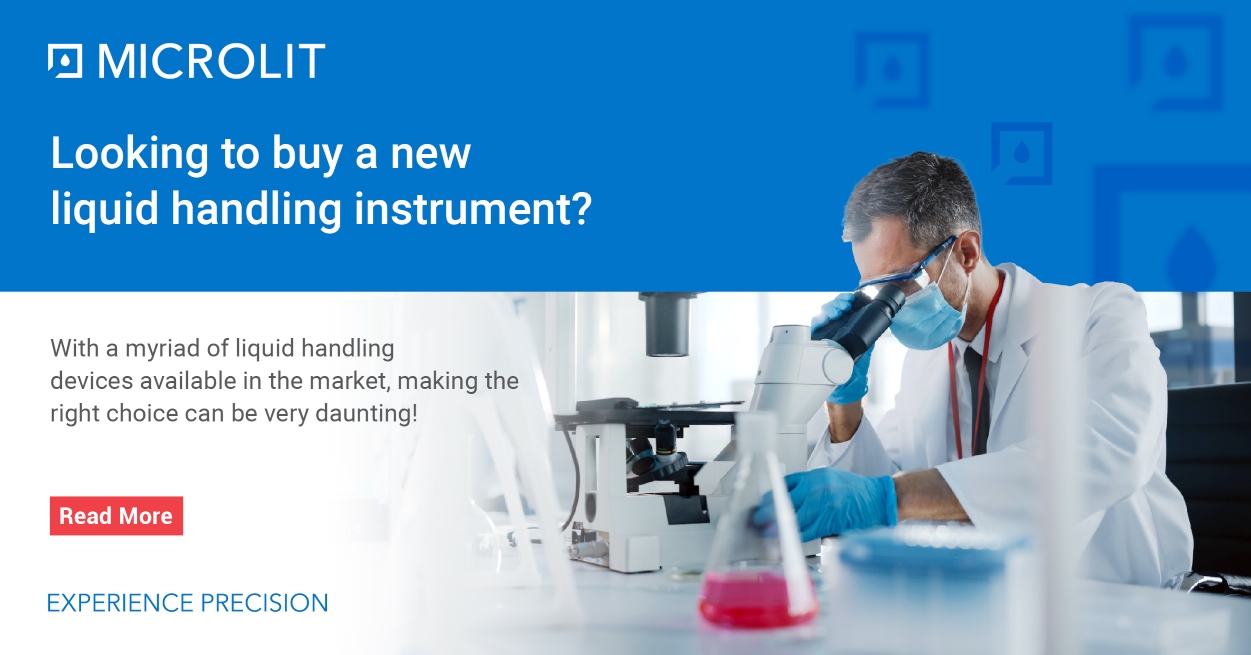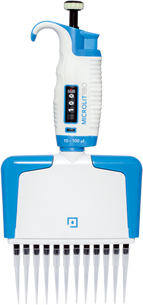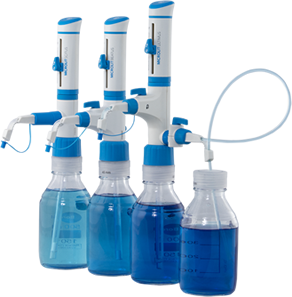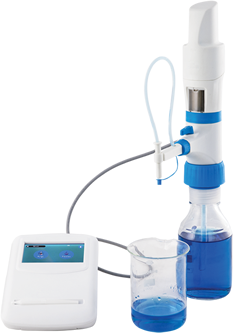With a myriad of liquid handling devices available in the market ranging from a simple pipette to a full-scale automated workstation, making the right choice can be daunting. According to Kay Chang, the Product Manager of Liquid Handling at Blue-Ray Biotech, one should consider certain key specifications while buying a liquid-handling solution:
- Size
- Throughput
- Channel Number
- Labware Compatibility
- Accuracy and Precision
- Volume Range
However, the importance of other factors, such as cost, ergonomics and extent of automation should not be overlooked. Begin by asking the following basic questions:
- Does your lab have enough room to install the proposed system? You should check with the manufacturer if they can offer the same equipment in a reduced size and compact footprint.
- Will you be able to upgrade the system in case of increased volume requirements?
- What are the required levels of speed, accuracy, volume and precision?
- How many plates need to be processed every week?
- In case of an automated system, how versatile and user-friendly is the associated software?
- In case of a manual liquid-handling equipment, how ergonomic is the device?
Types of Liquid Handling Devices
- Manual Pipettes: A manual pipette is a handheld device for accurately measuring and dispensing low liquid volumes. Manual pipettes find application in the field of life sciences, biotechnology and pharmaceuticals.
- Electronic Pipettes: Electronic pipettes consist of a motor component, which is used for regulating aspiration and rate of dispensing in order to reduce the formation of air bubbles and prevent barrel contamination. In addition, using electronic pipettes minimize measurement errors in studies, wherein pipetting is performed repeatedly as these pipettes are often programmable.
- Bottle Top Dispensers: A bottle top dispenser is used to dispense highly specific quantities of liquids (generally between 1ml and 100 ml), including chemicals, solvents and oils from bottles or similar containers. Using a bottle top dispenser can help in reducing loss of reagents and increasing efficiency.
- Pipette Tips: A pipette tip is a disposable and autoclavable cone-shaped attachment of a pipette, which facilitates the transfer of liquids. Pipette tips are available in a variety of formats, including pre-sterilized, non-sterile and filtered tips.
- Burettes: Burettes are graduated glass tubes, which are used to dispense small liquid volumes, dropwise, especially in titration experiments. The long, glass tube has a tap at its end, used to carefully add liquid drops to a solution. Burettes are available both in manual and digital formats.
- Pipette Fillers: Pipette fillers are lab instruments used to fill and drain pipettes by suction / pressure. They help in filling and dispensing liquids from pipettes in an extremely controlled manner.
Automated Liquid Handlers: Presently, lab workflows are highly complex and time intensive. At times, the operations involve very minute reagent volumes, and therefore, the quality of liquid transfer needs to be controlled efficiently. Due to this, automated systems have become extremely popular, as they can be optimized for a number of techniques, such as nucleic acid preparation, next-generation sequencing, TLC spotting, ELISA, PCR setup and liquid–liquid extraction.
You need to evaluate the degree of automation required for your operations to run seamlessly. In an automated liquid handler, software applications control almost all the operations of the device. Certain liquid handlers come with pre-scripted protocols for particular assays, and users are able to adjust the settings as required. One can also hire staff having advanced programming skills to design customized protocols.
You should also assess if the budget can be extended to include a semi / full automation system. This can drastically reduce the cost of reagents and operator hours.
Liquid Handling Applications
Liquid handling equipment is used across a wide variety of biological applications, such as molecular biology, drug discovery and development, forensics and materials science.
- Drug Development
Recent advancements in the domain of drug development are coupled with advances in liquid handling equipment and protocols. Various laboratories are now moving away from manual operations and integrating automation in their workflows through the use of high throughput workstations.
“Automation is critical to the modern drug discovery laboratory because it increases the speed and accuracy of tests, saves time, and allows the scientist to focus on science and not manual tasks. The ability to do half a million test points in one day has opened up new strategies in exploring drugs”, states Kevin Hrusovsky, CEO of US-based company, Caliper Life Sciences.
- Food and Beverage Analysis
Liquid handling is critical not only in assessing the nutritional value of food and beverages, it is also fundamental to testing toxins and contaminants present in them. Various manufacturers have recently opted for electronic pipettes to accelerate their laboratory workflows. Certain laboratories also use liquid handling equipment for detection of food-borne viruses.
- Sample Preparation for Mass Spectrometry
Mass Spectrometry experiments have been transformed completely by the use of robotic liquid handling systems, which have significantly altered the way MS samples are prepared. These systems have allowed laboratories to work smarter and quicker. As per a recent report published in the journal Analytical Sciences, robotic liquid handling systems have the ability to enhance the throughput of an experiment by almost 100 samples.
- Next-generation sequencing (NGS)
Automated liquid handling systems have offered scientists a faster, easier and cost-effective way to prepare NGS samples, as well as sustain the desired high-throughput workflow. Robotic liquid-handling devices greatly enhance the capacity of NGS workflows to run independently with improved performance and precision.
“Automatic liquid-handling systems have the potential to significantly optimize genome sequencing outputs, both in time and costs. As the needs of biological laboratories become clearer, the properties of these pipetting robots also evolve,” according to a report published in the journal BMC Genomics.
Liquid handling Trends
Currently, manufacturers are focusing on using semi-automated systems to enable automation of labs with limited budgets that don’t permit end-to-end automation. Such systems operate through push buttons, thus offering a higher level of ease-of-use and flexibility than a manual pipette. In addition, Artificial intelligence (AI) is changing the way modern labs function. The current focus is on enhancing process security features in order to fulfill the increasing regulatory requirements. Such software updates usually need to be tweaked for appropriate customization of protocols without any compromise in capability.
The primary limitations associated with liquid handling systems are reliability and reproducibility. The devices need to be efficient to function well in difficult experimental conditions with minimal downtime and maintenance requirements. One needs to be familiar with the principles, strengths and weaknesses of the equipment in order to prevent undesirable results.






 12107
12107





